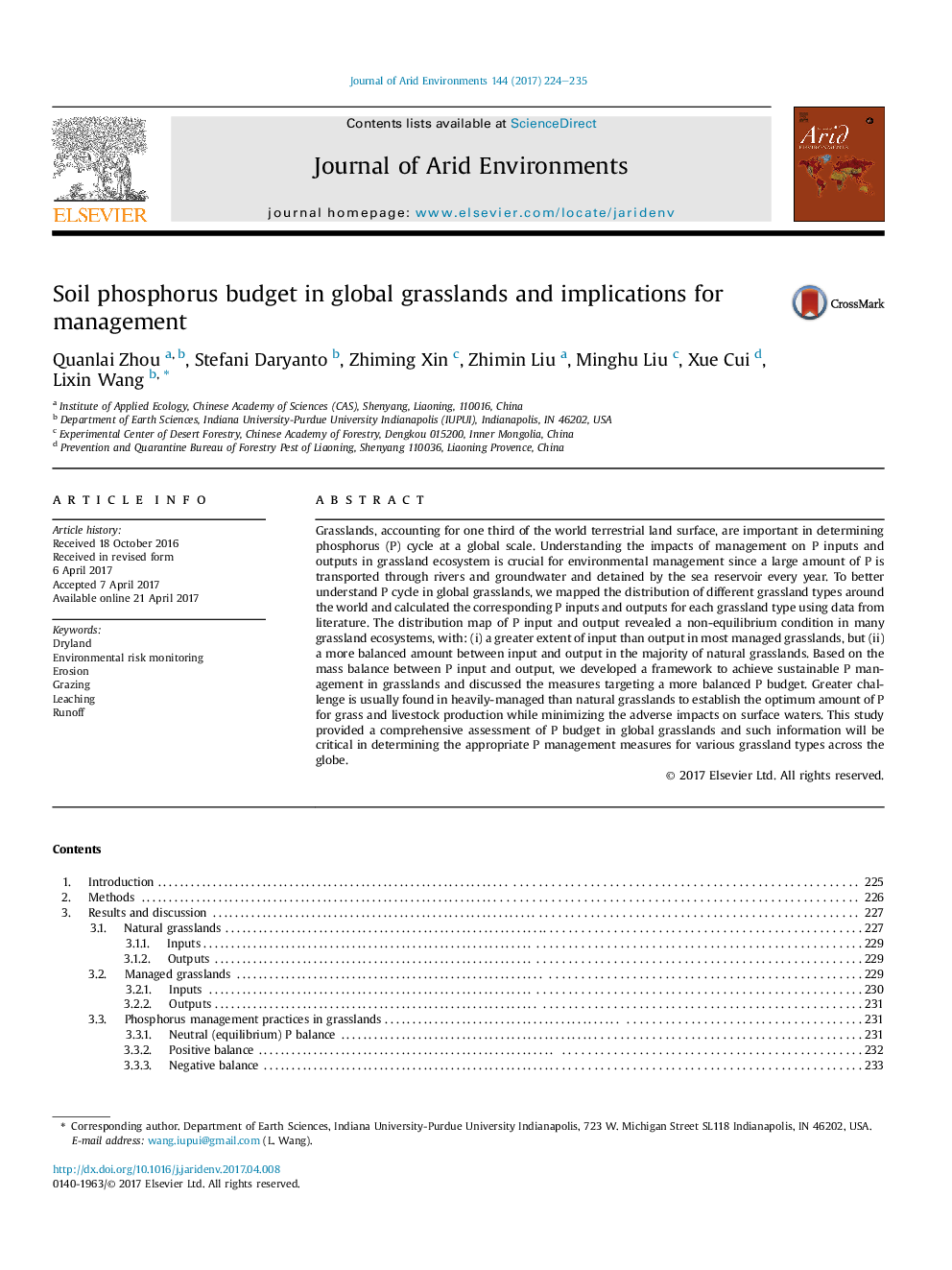| Article ID | Journal | Published Year | Pages | File Type |
|---|---|---|---|---|
| 5744358 | Journal of Arid Environments | 2017 | 12 Pages |
â¢Distribution of grassland types was mapped, including their corresponding P inputs and outputs.â¢The overall net balance of P was quantified in different grassland types.â¢Natural grasslands had a small range of P balance (between â2.01 and 1.2 kg P haâ1).â¢Managed grasslands had a wide range of P balance (between â42 and 126 kg P haâ1).
Grasslands, accounting for one third of the world terrestrial land surface, are important in determining phosphorus (P) cycle at a global scale. Understanding the impacts of management on P inputs and outputs in grassland ecosystem is crucial for environmental management since a large amount of P is transported through rivers and groundwater and detained by the sea reservoir every year. To better understand P cycle in global grasslands, we mapped the distribution of different grassland types around the world and calculated the corresponding P inputs and outputs for each grassland type using data from literature. The distribution map of P input and output revealed a non-equilibrium condition in many grassland ecosystems, with: (i) a greater extent of input than output in most managed grasslands, but (ii) a more balanced amount between input and output in the majority of natural grasslands. Based on the mass balance between P input and output, we developed a framework to achieve sustainable P management in grasslands and discussed the measures targeting a more balanced P budget. Greater challenge is usually found in heavily-managed than natural grasslands to establish the optimum amount of P for grass and livestock production while minimizing the adverse impacts on surface waters. This study provided a comprehensive assessment of P budget in global grasslands and such information will be critical in determining the appropriate P management measures for various grassland types across the globe.
